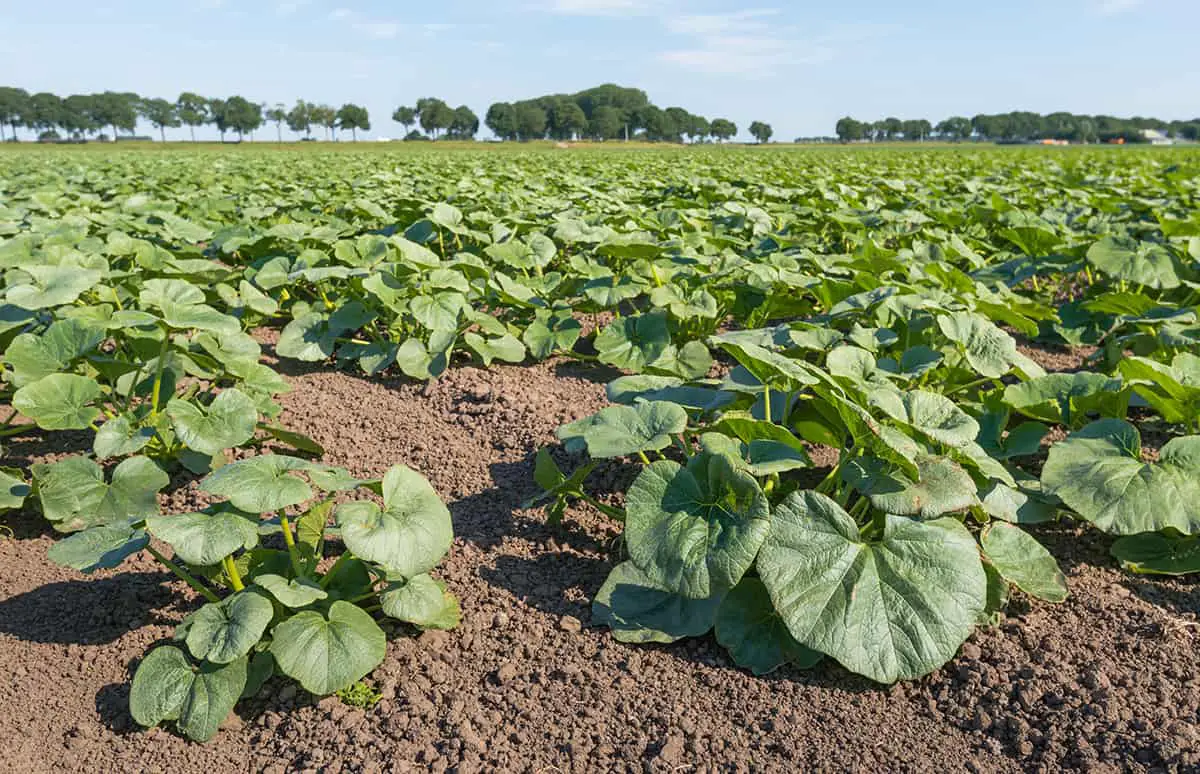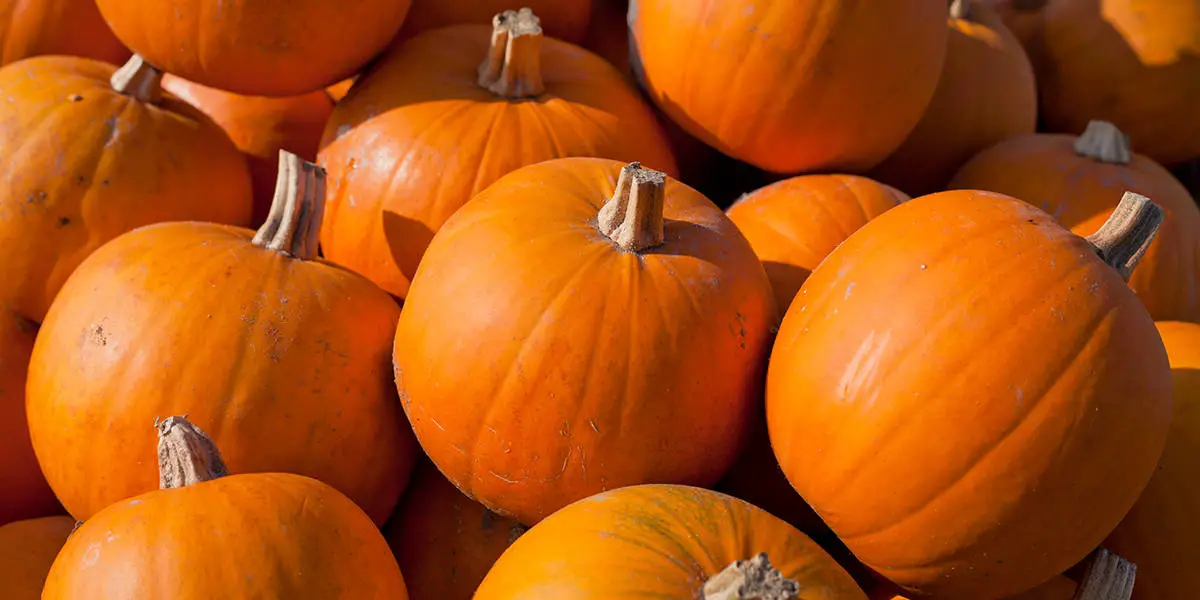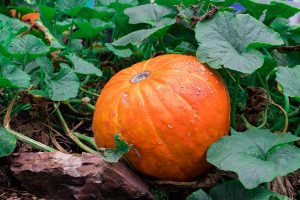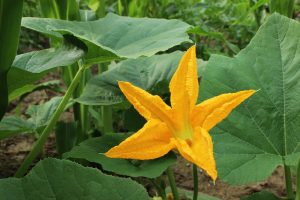Growing pumpkins can be a really fun experience for the whole family, which leads to baking homemade pumpkin pie in the fall, or decorating pumpkins for Halloween. If you’re wondering how many pumpkins you can expect to yield from your harvest, the answer will depend on a number of factors.
Here we look at the average amount of pumpkins that each plant can produce, and how you can increase the size of your pumpkin yield.
Table of Contents
How Many Pumpkins Can One Plant Produce?
The number of pumpkins that can grow on a single pumpkin plant will vary depending on several factors, including the pumpkin variety, growing conditions, and how well the plant is cared for. Some smaller pumpkin varieties may produce as many as 10 to 12 pumpkins per plant, while larger varieties may produce 1 to 3 pumpkins.
This is because each plant can only produce so much energy, and a lot of energy is required to grow a pumpkin. If you’ve chosen to grow a large variety of pumpkins, the plant is going to direct all of its energy into producing just one or two big pumpkins. Mini pumpkins don’t require quite as much energy, which is why a single plant can grow as many as 12 pumpkins at once.
What Affects Pumpkin Yield?

The number one factor that affects the amount of pumpkins your pumpkin plant can produce is the variety. If you’re growing a large variety, then at most, it may be able to produce three large pumpkins. This has nothing to do with how well the plant has been cared for, it is simply in the genetics of the plant.
Even when grown in ideal conditions, a pumpkin plant producing large pumpkins will only ever grow between one and three pumpkins. By contrast, mini varieties can grow more pumpkins on each plant, generally between 8 and 12 pumpkins. Medium pumpkin varieties will produce around 3 to 5 pumpkins per plant.
The other factor that is going to impact how many pumpkins your plant produces is the care and conditions in which it is grown in. Improper care will lead to fewer pumpkins or even no pumpkin production on your plant.
How to Increase Pumpkin Yield
There is no way to make a pumpkin plant produce more than its variety allows, however, with the right care and conditions, you can maximize the amount of pumpkins your plant can yield. For example, if you’re growing a mini variety of pumpkins, the right care will help to ensure you get a harvest of 10 to 12 pumpkins rather than 6 to 8 pumpkins.
Temperature
Weather conditions play a significant role in pumpkin yield. Pumpkins require warm temperatures and plenty of sunlight to grow well. Frost and extreme temperatures can damage the plants and reduce yields.
Light
Pumpkin plants need plenty of sunlight to thrive. Plant them in a location where they will receive a minimum of 6 hours of direct sunlight each day. In cooler climates, 8 hours or more of direct sunlight per day will be preferable.
Soil
The type and quality of soil can significantly impact pumpkin yield. Pumpkins thrive in well-drained, loamy soil that is rich in organic matter. Soil that is too sandy or clayey can hinder root development and reduce yield. Soil testing and proper soil preparation can help optimize growing conditions.
Water

Consistent and adequate watering is crucial for pumpkin development. Aim for soil that is consistently moist; neither too wet nor too dry, since this can stress the plant and affect fruit production. Consider using drip irrigation to provide a consistent water supply.
Pruning
Proper pruning and training of pumpkin vines can improve yield and fruit quality. Pruning helps control vine growth and redirects energy to fruit production.
Fertilizer
Adequate nutrient levels in the soil are essential for pumpkin growth. Pumpkins are heavy feeders and require fertilization throughout the growing season.
Nitrogen, phosphorus, and potassium are essential nutrients, but pumpkins also benefit from micronutrients. Soil tests can help determine specific fertilizer needs. Opt for fertilizers specifically formulated for pumpkin or fruiting plants.
Spacing

Proper spacing between pumpkin plants is important. Crowded plants can compete for resources and reduce yield. Follow recommended spacing guidelines for the specific pumpkin variety you are growing, and thin out seedlings during the early stage of growth, leaving behind the strongest plants.
Pollination
Pumpkins require pollination to produce fruit. Ensure that there is a healthy population of pollinators like bees and butterflies in your area, and consider planting pollinator-friendly flowers to attract them, as this will increase the likelihood of natural pollination.
Some flowers on the plant may not be successfully pollinated or may wither before producing fruit. If there is a lack of pollinating insects in your garden, hand-pollination can also be used to increase fruiting and potentially boost pumpkin production.
Best Pumpkin Varieties for Good Yield
Some types of pumpkins are known for producing better yields of pumpkins compared to others. If you’re after quantity, consider these popular pumpkin plant varieties:
Cannonball Pumpkins

These vines produce medium-sized pumpkins weighing around 5 lbs each, with 5 to 6 pumpkins typically growing on a single vine. Cannonball pumpkins typically have diameters ranging from 6 to 7 inches. They are almost perfectly round and somewhat flattened, resembling the shape of a cannonball.
The skin of the fruit is typically smooth and can come in various colors, including orange, white, or green. Cannonball pumpkins are best grown for ornamental or decorative purposes since they are not the most flavorsome.
Sugar Pie Pumpkins

Sugar Pie pumpkins are an heirloom variety that hails from the New England area of the United States. These mini pumpkins weigh just 2 to 3 lbs at full size, with a diameter of around 4 inches.
Sugar Pie pumpkins are popularly used in fall decor for their cute look, but they also have a robust flavor that makes them well-suited for use in cooking and baking. You can expect to get as many as 10 pumpkins from a single Sugar Pie vine.






